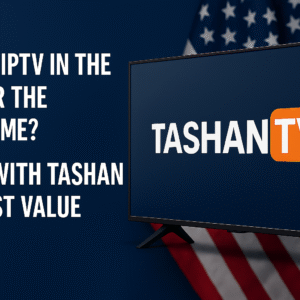Web 3.0 marketing is no longer about traditional ads or paid promotions it’s about creating ecosystems where users become active participants. In this new decentralized era, token incentives are the fuel that powers user growth, engagement, and loyalty. Whether it’s a DeFi platform, NFT marketplace, or metaverse project, offering tokens in exchange for actions aligns interests between the project and its users. In 2025, tokenized incentives have become the backbone of most successful Web 3.0 marketing campaigns. They offer a unique way to reward behaviors, create viral loops, and bootstrap entire communities from scratch. Unlike Web 2.0, where users often get nothing in return for their data or time, Web 3.0 marketing ensures users are stakeholders in the growth they help generate. But token incentives only work when designed and deployed correctly. Poorly planned schemes lead to dumping, exploitation, or community mistrust. This blog breaks down how to use token incentives effectively from choosing the right models to planning distributions and measuring impact. By the end, you’ll understand how to turn your users into advocates through strategic incentive design.
What Are Token Incentives and Why Are They Essential in Web 3.0?
Token incentives are cryptographic rewards often in the form of native or governance tokens offered to users for performing desired actions. These tokens can represent value, access, or voting rights within a decentralized platform. In Web 3.0, users are no longer passive consumers. They help secure networks, provide liquidity, create content, participate in governance, and more. Token incentives compensate these contributions, ensuring users share in the value they help generate.
Here’s why token incentives matter:
-
User Ownership: Tokens give users a stake in the platform’s success.
-
Viral Growth: Rewarding users for referrals or content creation creates organic virality.
-
Bootstrapping Liquidity or Usage: New DeFi protocols attract early adopters through yield farming and liquidity mining.
-
Governance Participation: Tokens drive decentralized decision-making by empowering users to vote.
-
Community Loyalty: Users are more likely to stay and promote projects they’re invested in.
In short, token incentives are the currency of trust, engagement, and decentralization in Web 3.0. They allow platforms to grow without relying on centralized intermediaries or traditional marketing spend.
Types of Token Incentives in Web 3.0 Marketing
There are various types of token incentives, each designed to serve specific marketing and growth objectives:
a) Airdrops
Free distribution of tokens to wallets based on criteria like wallet activity or task completion. Ideal for awareness and community seeding.
b) Referral Rewards
Users earn tokens for inviting others. This builds network effects and drives viral expansion.
c) Liquidity Mining / Yield Farming
Users provide liquidity to DeFi protocols and earn token rewards. Effective for boosting initial TVL (Total Value Locked).
d) Staking Rewards
Tokens are given to users who lock up their assets, ensuring protocol security and price stability.
e) Play-to-Earn (P2E)
Gamified incentives where users earn tokens by playing blockchain games.
f) Learn-to-Earn
Users are rewarded for completing educational tasks or quizzes. Great for onboarding and user education.
g) Governance Participation
Tokens incentivize active participation in DAO proposals and voting.
Each incentive model caters to different phases user acquisition, retention, or re-engagement. Successful projects mix and match these types based on user behavior and growth metrics.
Designing Effective Token Incentive Models
Token incentives must be carefully designed to avoid misuse and ensure long-term sustainability.
Key Considerations:
-
Clarity of Goals: Are you trying to increase wallet signups, TVL, user retention, or governance participation?
-
Incentive-Action Alignment: The reward should be proportional to the action’s value. Don’t over-reward simple actions.
-
User Segmentation: Design different rewards for newbies, power users, contributors, and investors.
-
Fair Distribution: Avoid whales farming rewards by introducing caps, tiers, or proof-of-participation.
-
Token Supply Management: Ensure incentive allocation doesn’t dilute token economics.
Example:
A DeFi protocol might reward early users with governance tokens if they provide $1,000 in liquidity for over 30 days. This ensures users are not just farming for short-term gains but are helping the protocol stabilize its market.
Token incentives are powerful tools but without a data-driven, intentional model, they can quickly become a liability. Regular feedback loops, A/B testing, and real-time analytics are essential to refine them.
Best Practices for Launching Token Incentive Campaigns
To maximize impact, follow these best practices when launching token-based marketing campaigns:
a) Educate First
Before launching, ensure your community understands your tokenomics and incentive structure. Confused users lead to poor participation and FUD.
b) Build Hype and Awareness
Use social media teasers, countdowns, influencer partnerships, and community AMA sessions.
c) Use Trusted Platforms
Run your campaigns through platforms like Zealy, Galxe, or Crew3. These help manage tasks, avoid bot activity, and offer transparency.
d) Track Everything
Use on-chain data and Web3 analytics tools to monitor wallet behaviors, token retention, and task completion rates.
e) Optimize for Mobile
A large part of the Web3 community uses mobile-first interfaces ensure that your campaign pages and reward dashboards are mobile-friendly.
f) Gamify Participation
Use leaderboards, badges, and levels to make campaigns engaging and repeatable.
g) Watch Out for Sybil Attacks
Use KYC, Gitcoin Passport, or proof-of-personhood mechanisms to avoid bots abusing incentives.
Launching a successful campaign isn’t about one big splash. It’s a cycle of test, learn, adapt, and grow. Focus on delivering value while collecting insights.
Token Incentives vs. Traditional Marketing Incentives
Let’s compare how token incentives outshine traditional incentives in Web 3.0:
| Feature | Token Incentives | Traditional Incentives |
|---|---|---|
| Ownership | Users earn stake in the platform | No ownership for users |
| Transferability | Tokens can be traded | Discounts/coupons are non-transferable |
| Community Building | Increases DAO and governance participation | Limited community loyalty |
| Virality Potential | Referral/airdrop campaigns go viral | Slower and more expensive |
| Cost Efficiency | Low marketing spend with high ROI | High acquisition cost |
| Long-Term Engagement | Token appreciation drives retention | Short-term user interest |
Token incentives turn users into evangelists and investors, aligning growth with shared success. Unlike Web 2.0 where companies own all value, Web 3.0 shares it back through tokens. In 2025, most Web 3.0 users expect to be rewarded for their time, attention, and contributions. That makes token incentives not just effective but necessary for survival.
Use Cases of Token Incentives in Web 3.0 Projects
a) Uniswap – Liquidity Mining
Uniswap’s governance token (UNI) was distributed to users who had provided liquidity, traded, or held LP tokens. This early token reward built immense loyalty and community strength.
b) Axie Infinity – Play-to-Earn
Axie rewarded players with SLP tokens for in-game activities. Though it later faced sustainability issues, the initial surge showed the power of P2E token models.
c) Optimism – Retroactive Public Goods Funding
Optimism uses its OP token to reward developers and users retroactively based on positive impact turning contribution into a monetizable activity.
d) Gitcoin – Quadratic Funding
Gitcoin uses GTC tokens to fund open-source projects via quadratic voting. Contributors earn influence and rewards based on community alignment.
e) Lens Protocol – Social Graph Tokenization
Lens rewards users for social interactions, content creation, and engagement, building the future of Web 3.0 social media.
These real-world examples show the flexibility of token incentives in gaming, DeFi, social, development, and governance sectors.
How to Measure the Success of Token Incentives (200 words)
To ensure your incentive strategy is delivering value, track these key metrics:
a) Token Holder Retention
How many users hold your token beyond 30, 60, or 90 days?
b) User Activity
Post-incentive actions like staking, governance voting, referrals, or using the dApp.
c) Referral Conversion Rate
How many users invited others, and how many converted to active users?
d) Cost per Acquisition (CPA)
What was the token cost to bring in a quality user?
e) Engagement Rates
Number of tasks completed, on-chain actions triggered, and campaign participation.
f) Liquidity Growth
How much liquidity was added to pools due to incentive farming?
g) Community Sentiment
Monitor Discord, Twitter, and Telegram for user sentiment around the campaign.
h) Dumping Analysis
Track how quickly tokens are sold post-receipt this may indicate speculators, not community builders.
Use tools like Dune Analytics, Flipside Crypto, Nansen, and Token Terminal to measure real-time impact.
Quantitative metrics should be paired with qualitative insights, such as feedback surveys and AMAs, to refine future campaigns.
Future Trends in Token-Based Marketing (2025 and Beyond)
Web 3.0 marketing is entering a new phase in 2025. Here are the trends shaping token incentives:
a) AI-Powered Personalization
AI will tailor incentive campaigns based on wallet behavior, past participation, and user preferences.
b) Soulbound Tokens (SBTs)
Non-transferable reward tokens that prove reputation and contribution in DAOs and communities.
c) On-Chain Loyalty Programs
Brands will replace loyalty points with blockchain-based tokens and NFTs for on-chain shopping and engagement.
d) Cross-Protocol Incentive Bridges
Tokens will be used across multiple dApps, creating composable reward economies.
e) Proof-of-Personhood & Anti-Bot Layers
Advanced identity verification will make token campaigns fairer and Sybil-proof.
f) Real-World Integration
Token rewards will increasingly be redeemable for real-world services, products, and experiences (Web3 x IRL).
g) Sustainable Tokenomics
More emphasis on modeling inflation, vesting, and burn mechanisms to ensure long-term incentive sustainability.
The days of “give free tokens and hope for growth” are over. In the future, precision-driven, intelligent, and ethical incentive design will dominate the Web 3.0 landscape.
Conclusion
Token incentives are transforming Web 3.0 marketing by putting value and ownership back into the hands of users. In 2025, they are no longer optional—they are foundational. When used strategically, tokens can drive user acquisition, engagement, retention, and even governance. But success doesn’t lie in blindly giving away tokens. It lies in aligning incentives with meaningful behaviors, using data to refine models, and designing for sustainability, not speculation. Projects that treat users as co-creators not just consumers will build thriving, sticky communities.
From airdrops and liquidity mining to play-to-earn and referral models, token incentives offer endless possibilities. But every campaign must be backed by clear goals, protective measures, and post-campaign analytics to ensure ROI and trust. As the Web 3.0 space matures, the winners will be those who master the art of incentivizing participation without compromising purpose. Token incentives are not just a marketing tool they are the bridge to decentralized value creation and long-term community success.


